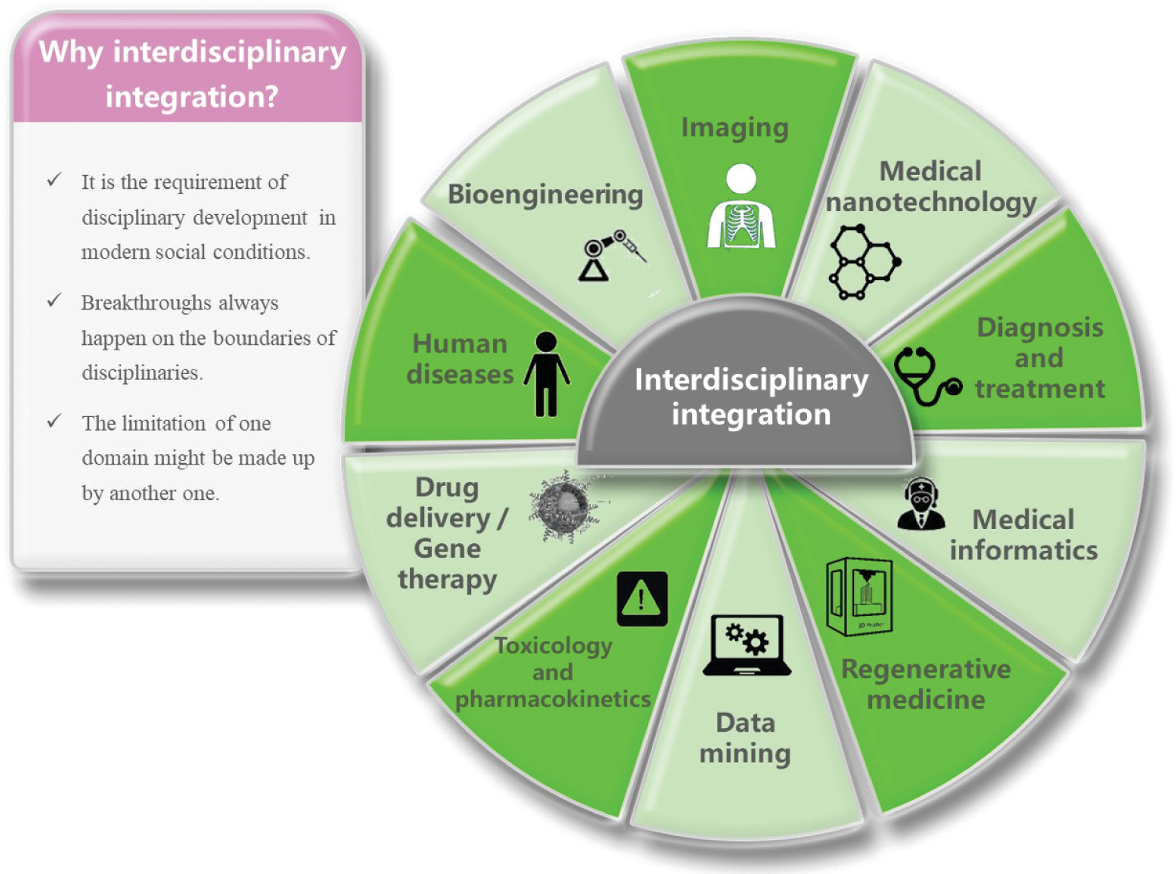The Integration of Reverse Engineering in Academic Research

Reverse engineering is a process of understanding a system by examining its components and structure. It is a valuable tool for academic research, as it allows researchers to gain insights into the inner workings of complex systems and develop new and innovative approaches to solving problems.

Benefits of Integrating Reverse Engineering in Academic Research
The integration of reverse engineering in academic research offers several significant benefits.
-
Improved Understanding of Complex Systems: Reverse engineering enables researchers to break down complex systems into their individual components and analyze their interactions. This helps them gain a deeper understanding of the system’s behavior, identify its strengths and weaknesses, and uncover potential areas for improvement.

-
Innovative Approach to Problem Solving: By studying the design and implementation of existing systems, researchers can gain new perspectives and insights into solving similar problems. This can lead to the development of innovative solutions that address challenges in new and unexpected ways.
-
Enhancement of Critical Thinking Skills: Reverse engineering requires researchers to critically analyze and evaluate existing systems, identify patterns, and draw conclusions based on observations. This process fosters critical thinking skills, which are essential for conducting high-quality academic research.
-
Interdisciplinary Collaboration: Reverse engineering often involves expertise from multiple disciplines, such as engineering, computer science, and design. This encourages interdisciplinary collaboration among researchers, leading to the sharing of knowledge and the generation of new ideas.
Applications of Reverse Engineering in Academic Research
Reverse engineering has broad applications across various academic disciplines. Some common examples include:
-
Engineering and Computer Science: Reverse engineering is used to understand the design and functioning of electronic circuits, software systems, and mechanical products. It plays a crucial role in product development, optimization, and security analysis.
-
Biological Sciences: Reverse engineering approaches are applied to study the structure and behavior of biological molecules, cells, and systems. This aids in understanding biological processes, disease mechanisms, and developing new therapeutic strategies.
-
Social Sciences: Reverse engineering techniques are employed to analyze social and economic systems, such as organizations, markets, and networks. They help researchers gain insights into human behavior, decision-making processes, and the dynamics of social interactions.
Challenges and Future Directions
While reverse engineering offers numerous benefits, it also presents some challenges in academic research. These include:
-
Data Accessibility: Obtaining access to the necessary data for reverse engineering can be difficult, especially when dealing with proprietary systems or confidential information.
-
Expertise Requirements: Reverse engineering often requires specialized knowledge and skills in specific domains. This can limit the accessibility and feasibility of the technique for researchers without the requisite expertise.
Future directions for the integration of reverse engineering in academic research include:
-
Development of Standardized Methodologies: Establishing standardized methodologies and frameworks for reverse engineering would enhance the transferability and reproducibility of research findings across different domains.
-
Advancement of Reverse Engineering Tools: Continued development of user-friendly and powerful reverse engineering tools would make the technique more accessible to a wider range of researchers.
-
Encouraging Interdisciplinary Collaboration: Fostering interdisciplinary collaborations between researchers from different fields would enable the application of reverse engineering approaches to a broader range of problems and lead to novel insights.
Conclusion
The integration of reverse engineering in academic research offers significant advantages in understanding complex systems, developing innovative solutions, enhancing critical thinking skills, and promoting interdisciplinary collaboration. Overcoming the challenges related to data accessibility and expertise requirements, as well as embracing future directions for methodological development and tool advancement, will further enhance the contributions of reverse engineering to academic research and the generation of new knowledge.## The Integration Of Reverse Engineering In Academic Research
Executive Summary
Reverse engineering is the process of analyzing a system to comprehend its design, and then reproducing it. It is often used to study complex systems. Reverse engineering has been integrated into academic research as a crucial tool in various disciplines including engineering, computer science, and biology to uncover underlying fundamental principles, foster innovation and create novel solutions. This integration has many advantages, such as enabling researchers to better understand existing technologies, identify areas for improvement, and develop new technologies. However, there are also some challenges associated with integrating reverse engineering into academic research. These include difficulty in acquiring products for investigation, intellectual property issues, ethical considerations, and problems related to reproducibility and reliability of experiments.
Introduction
Reverse engineering is a useful tool for many purposes, such as learning more about a competitor’s product or finding ways to improve an existing design. Reverse engineering is the process of understanding how something works by taking it apart and analyzing its components. This information can be used to reproduce the product or system, or used to design a new product that is similar to it or is better than it.
Applications of Reverse Engineering in Academic Research
Product Design and Development
-
Understanding Existing Technologies: Reverse engineering helps researchers comprehend the design and functionality of existing technologies. This knowledge aids in identifying strengths, weaknesses, and potential improvements areas.
-
Innovation and New Product Development: Researchers utilize insights from reverse engineering to create innovative solutions by discovering new applications and features, redesigning existing products, merging features from other products, and devising new uses for components.
-
Education: Disassembling and analyzing products offers an experiential and engaging platform for students to acquire hands-on skills, comprehend design, and production processes, and cultivate analytical thinking.
Materials Science
-
Characterizing Materials Properties: Reverse engineering permits researchers to explore material characteristics by systematically evaluating properties of substances. This aids in developing high-performance materials with customized, tailored properties.
-
Identifying Manufacturing Defects: Reverse engineering assists researchers in identifying imperfections, manufacturing variations, and potential failure points. This understanding promotes enhancements in production processes.
-
Improving Material Performance: Through reverse engineering studies, researchers can uncover structure-related property relationships, leading to novel strategies for altering microstructures and improving material behavior.
Computer Science
-
Understanding Software Functionality: Reverse engineering sheds light on software performance, facilitating bug fixes, optimizations, and performance improvements. It is particularly useful to analyze legacy systems or understand closed-source software.
-
Developing New Software: Reverse engineering enables researchers to comprehend existing software architecture. It can also influence the creation of new programs by extracting important features or algorithms from existing software.
-
Extending Existing Software: By leveraging existing software frameworks and functionalities, scholars can extend current software applications and integrate new components or services.
Life Sciences
-
Biomimicry and Product Innovation: Reverse engineering biological structures and processes inspires researchers to design novel products and technologies. Engineering solutions inspired by natural systems often lead to breakthroughs in architecture, aerodynamics, and materials science.
-
Drug Discovery and Development: Reverse engineering biological pathways and molecules aids in understanding disease mechanisms and identifies potential therapeutic targets. This information is leveraged to develop innovative pharmaceuticals.
-
Bioinformatics: Reverse engineering approaches enable researchers to explore genetic information, protein interactions, and cellular pathways. This knowledge plays a crucial role in bioinformatics studies and the understanding of biological systems.
Challenges in Integrating Reverse Engineering in Academic Research
-
Difficulty in Acquiring Products: Researchers may face difficulty obtaining products from manufacturers or accessing confidential or proprietary technologies, limiting reverse engineering opportunities.
-
Intellectual Property Concerns: Reverse engineering may raise intellectual property issues, particularly when copying or modifying existing products or technologies without authorization, potentially leading to infringement or legal disputes.
-
Ethical Considerations: Ethical issues associated with reverse engineering include ensuring product safety, adhering to research integrity standards to assure accuracy and transparency, and considering the potential impact on manufacturers and industries.
-
Reproducibility and Reliability: Reproducing reverse engineered systems or processes might be challenging, especially if the original documentation is unavailable. This can lead to unreliability and difficulties replicating or verifying findings.
Conclusion
Reverse engineering is a powerful technique used in academic research to comprehend, modify, and create new technologies and products. It fosters innovation and contributes to academic knowledge across many fields of science, engineering, and computer science. Despite its advantages, the integration of reverse engineering in academic research faces challenges, including ethical contemplations, efforts to guarantee reproducibility and dependability, and difficulties in procuring required information. However, with growing advancements in research methodologies, ethical guidelines, and open access to research findings, the outlook for future technological advancement enhanced by reverse engineering looks encouraging.
Keyword Phrase Tags:
- Reverse engineering in academic research
- Product design and development
- Materials science
- Computer science
- Life sciences

This article provides an in-depth and insightful analysis of the integration of reverse engineering in academic research. The author presents a comprehensive overview of the topic and explores its implications and applications in various research domains.
While the article touches on the potential benefits of reverse engineering in academic research, it fails to adequately address the ethical concerns surrounding the practice. The author should have delved deeper into the implications of intellectual property infringement and the potential misuse of reverse-engineered technologies.
The article provides a thorough examination of the methodologies and best practices for integrating reverse engineering into academic research. It offers valuable insights into the challenges and pitfalls researchers may encounter during the process and suggests strategies to mitigate them.
The author’s claim that reverse engineering is essential for innovation and progress in academic research is highly debatable. While it can be a valuable tool in certain contexts, it should not be overstated as the sole driver of research and development.
It’s amusing how the author presents reverse engineering as a groundbreaking concept in academic research. Reverse engineering has been a fundamental part of scientific inquiry for centuries. The article seems to reinvent the wheel without acknowledging the rich history of the practice.
Oh, how revolutionary! Reverse engineering in academic research, who would have thought? It’s not like scientists have been using this approach for ages to understand and improve upon existing technologies. Kudos to the author for discovering this hidden gem.
Integrating reverse engineering into academic research? That’s like teaching a fish to climb a tree! Seriously, though, the article made me chuckle with its overly complicated jargon. Reverse engineering is basically taking something apart to see how it works. How hard can it be?
This article has ignited my passion for reverse engineering! I am eager to explore its applications in my own research and delve deeper into the fascinating world of taking things apart to understand them better. Thank you for sharing your insights!
While the article raises some interesting points, I remain skeptical about the widespread adoption of reverse engineering in academic research. The potential for misuse and ethical breaches must be carefully considered before fully embracing this approach.
I found the section on the role of reverse engineering in interdisciplinary research particularly captivating. It highlighted the potential for combining insights from different fields to drive innovation. I am eager to learn more about the practical applications of this approach.